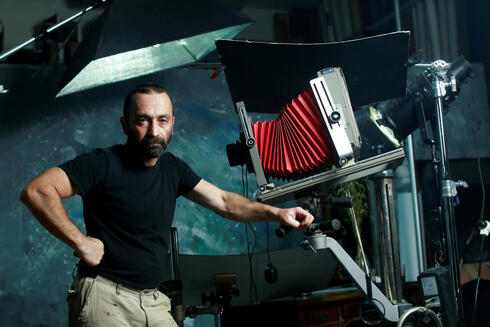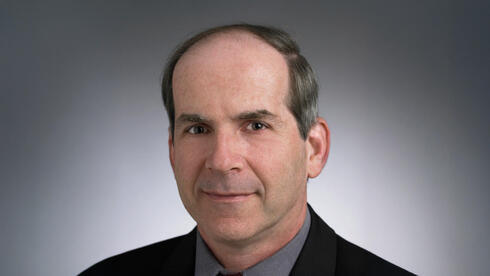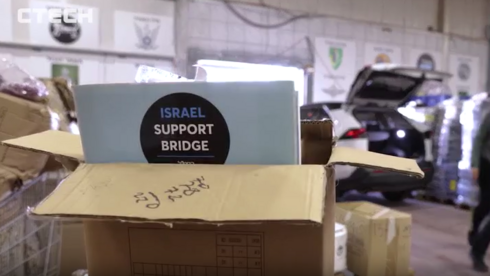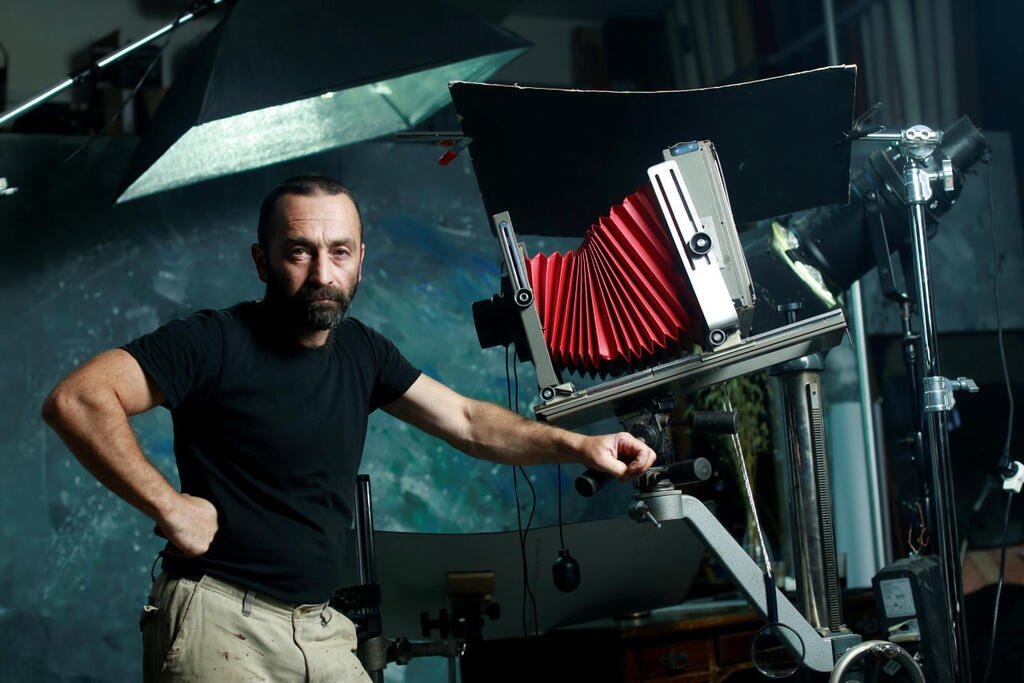
Long Exposure
“My picture can crack but that’s what makes it valuable”
Edward Kaprov takes photographs on glass using the 19th century-Collodion process
Edward Kaprov (46), takes photos on glass using the Collodion wet-plate process, which is dated to the 19th century.
What is the Collodion process?
“The collodion wet-plate process uses a chemical solution that is light-sensitive, and is spread on glass panes. During the photography process, the liquid dries and the impression remains. This method was developed in 1851, and was the first that allowed photographers to leave their studios and photograph outdoors. Using this method, photographer Roger Fenton was able to capture the Crimean War.”
How has such an anachronistic method been preserved?
“Mark Osterman was a legendary figure in the world of photography, who decided to revive this technique in the 1990s and it made a comeback.”
How does it work?
“The method is similar to analogue photography, which uses film. I buy the raw, chemical materials, and create the Collodion emulsifier on my own, which I then spread over an A4-sized slate of glass. Afterward, I dip that piece of glass in a solution of silver nitrate. The entire process is done in a darkroom, so that light won’t affect the state of the chemical solution. I then place the glass slate in a black box.”
So your pictures are more silver than black-and-white?
“Yes, because the color is affected by the silver nitrate that I add to the solution. That’s the beauty of this method. If you look at photographs from that era, even the light aligns differently.”
Aren’t you afraid that your creation will crack? It’s made of glass.
“I scan every photograph I develop, but it’s only a digital copy. If a Collodion photo cracks, then it’s gone. But that’s what makes it unique in the digital era. When there aren’t any copies, the picture has more value.”
How did you get into this field?
“I studied photography, and worked for years as a news photographer. In the internet era, print is disappearing, so news organizations are investing less time on photography. Several magazines shut down, and at one point I found myself unemployed, so I started to focus more on my artistic projects.
“One of those projects is called ‘Borders,’ where I photographed people’s portraits who reside on Israel’s borders to show the gap between reality and the vision of the Land of Israel. As someone who immigrated to the country from the former USSR, I know how big the gap between reality and a vision can be, even on the verge of absurd.
“As part of the research, I delved into the character of (Theodor) Herzl in his book ‘Altneuland.’ I wanted to showcase Israel like Herzl had envisioned it 110 years ago, at least as it seemed in the pictures. So I searched for which techniques were in use back then, and stumbled across the Collodion process which had me mesmerized.
“I place the box inside a special camera and then take a picture. Then I open the aperture and expose the glass to the light for 10 seconds. Then I go back to the darkroom, and develop the photo. In summer in Israel, the photo dries quickly and is ready in 15 minutes.”
How did you learn a technique that has nearly gone out of use?
“I developed an obsession. For a year, my life revolved around it. I bought some books that were 109 years old to learn the technique, which included understanding the chemistry behind it. Every day, I would run a few trials to see whether or not it came out well. It wasn’t simple. At a certain point it undermined my professional perception of myself, because instead of focusing on my photography, I became obsessed with perfecting my technique. I wanted to succeed, and after a year, I did.”
How much does a Collodion photo cost?
“Around NIS 1,600 ($500).”
Can you make a living out of this job?
“Unfortunately no, and that’s why I also do regular commercial photoshoots, and supplement my income as a porter.”
How long does each process take?
“After less than ten minutes of taking the photo, you can see the final result. But the entire process takes an hour and a half. It’s not like taking a photo for your passport. People come and I talk to them and get to know them, because if I already know them or they’re familiar, I still need to make sure that my subjects stay focused, since it’s not so natural to have your picture taken. Especially in a Collodion photograph, harsh lighting is directed at the subject, and it’s uncomfortable. The subject must sit or stand still and not move for ten seconds, because once I put the film in the camera, I can’t see them. That’s why they must comfortably settle in their pose before I see what it looks like. It's a sort of concentration like meditation. If you are photographed with intention, you have a pose and stance that are preserved in the photo.”
So why do people ask for a Collodion portrait instead of a regular one?
“The truth is I’m still trying to figure that out. Collodion is a type of dramatic photography, but many are unfamiliar with it. When they come to me, they’re shocked. They undergo a type of realization while the process is taking place. Today, you can take a picture immediately of anything - whether that’s what you eat or who you meet, or what type of screw you want to buy - you snap and send. You do it without thinking. And that makes the photo lose its value. When I take a Collodion photograph, I meet the person and accompany them while they have to sit still. Afterward, they join me in the darkroom and see how their image appears on a clear slate of glass. Photographers are always surprised by the result, because it differs from the subject’s mirror image. I’ve been doing this for five years, and still eagerly await to see the final result.”
Were some people disappointed with the final result? Or tell you that it came out ugly?
“I would interpret that a bit differently. I’d say some people struggled with how their picture came out. That’s why I make a point of having a small discussion with them beforehand. Using this technique, only a single image comes out. It’s a one-time photograph. People who come here aren’t afraid to look in the mirror. I had a few cases where people insisted that they ‘didn’t look like that in real life,’ and I prefer not to take pictures of those kinds of people. I’m not here to please the subject. I want people to be satisfied with the result, but I also can’t do something I don’t believe in. I need to be honest with the photograph."















